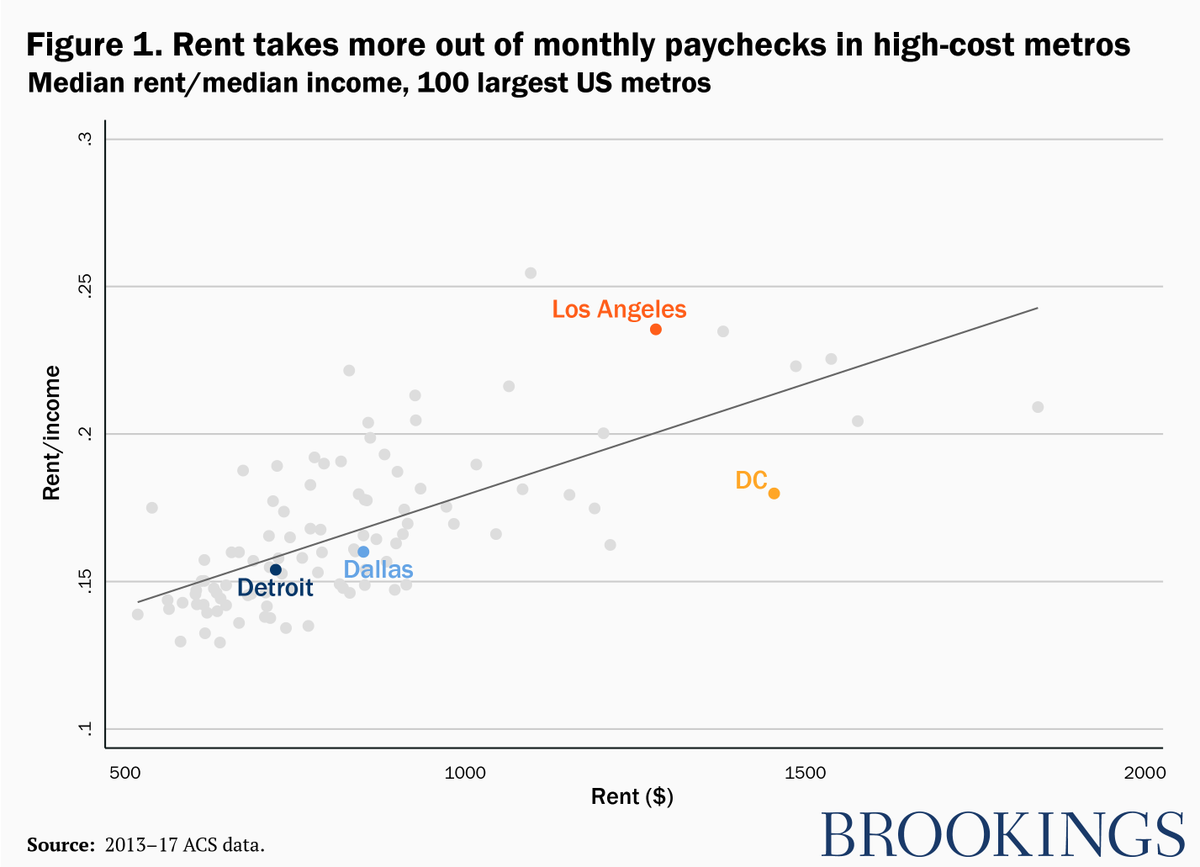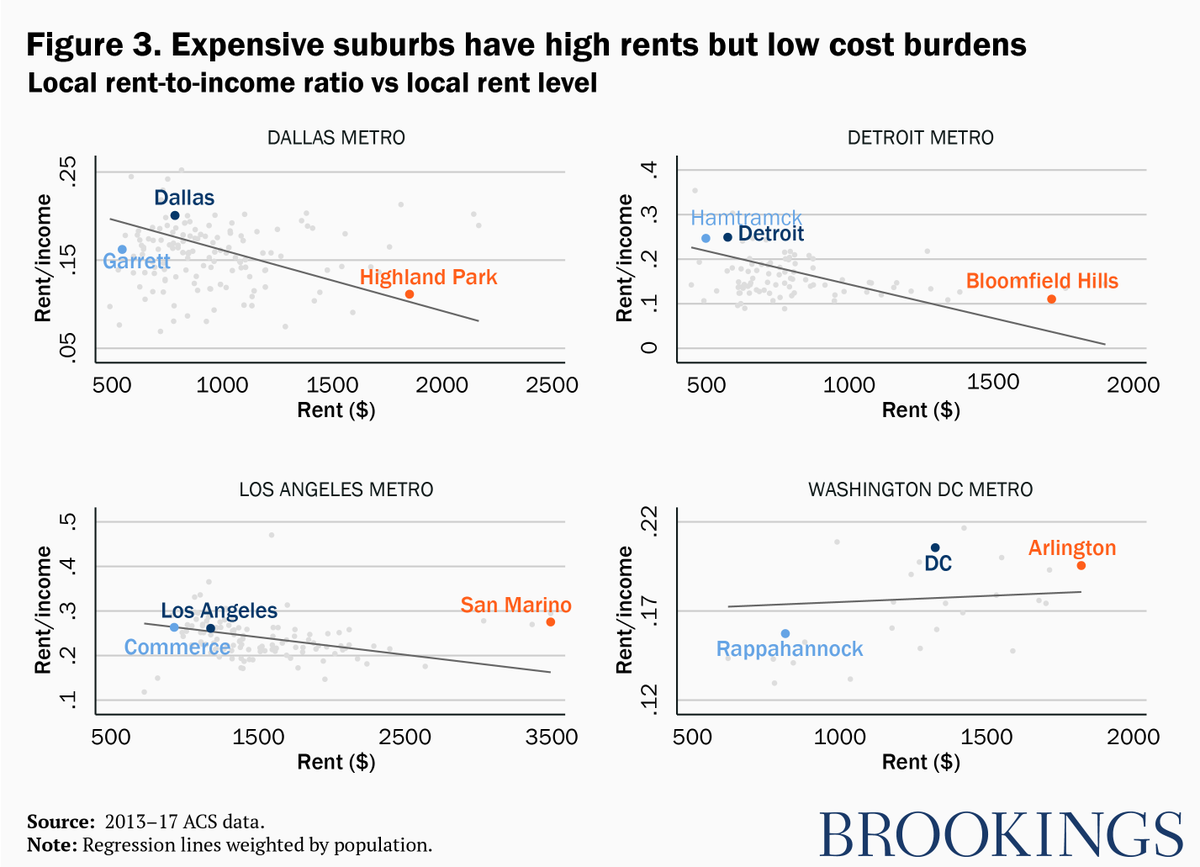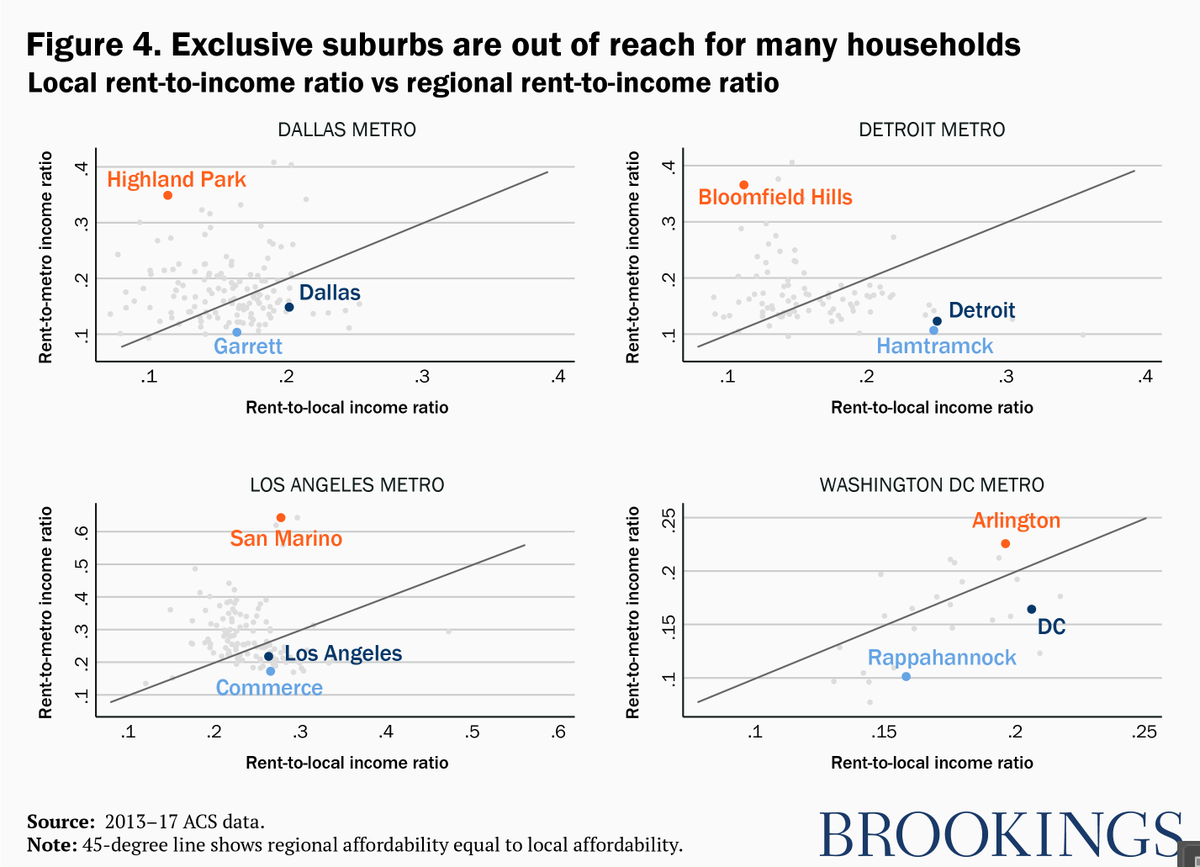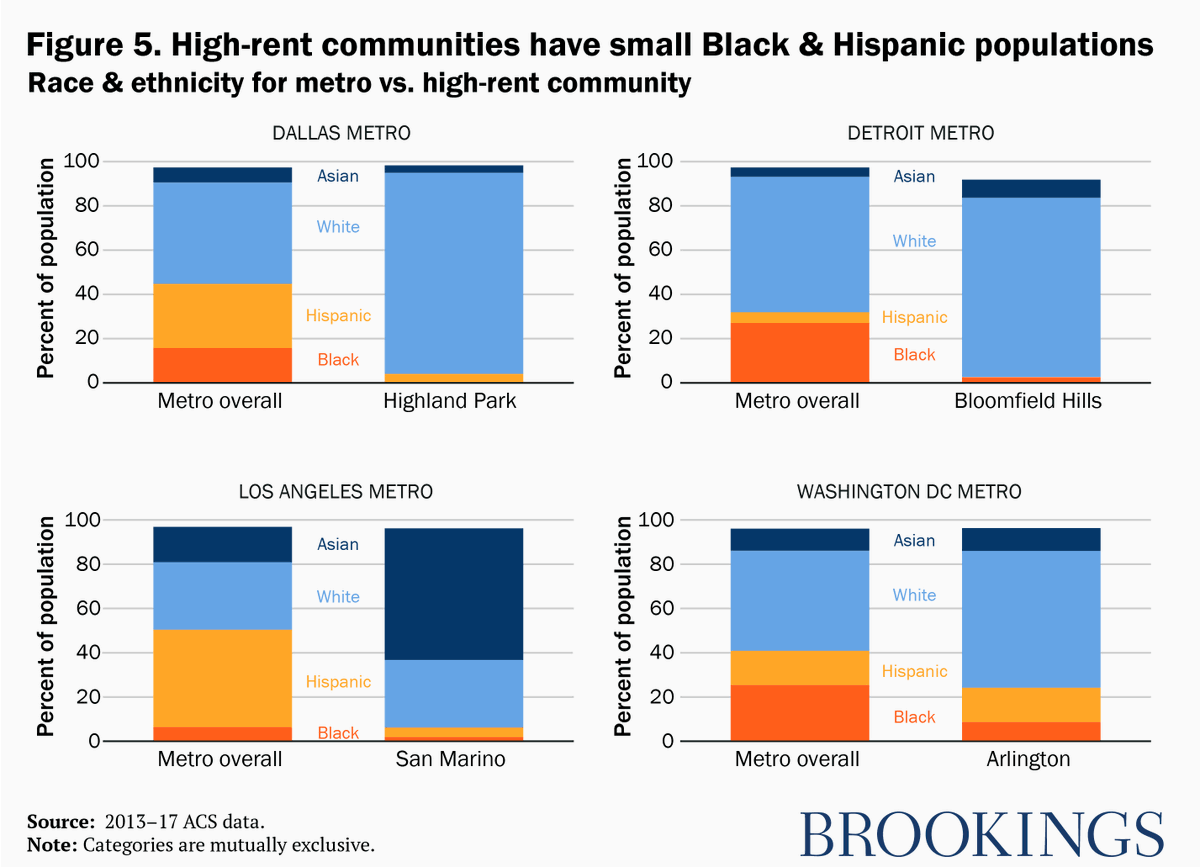Friends, let& #39;s step back a bit from "abolish the suburbs" & talk about the underlying problem. Economic opportunity varies a lot across places. And high housing costs in some suburbs are barriers to accessing opportunity--esp for Black & Latino renters. https://www.brookings.edu/blog/up-front/2020/07/16/exclusive-communities-deepen-inequality-in-every-metro-area/">https://www.brookings.edu/blog/up-f...
White communities used to bar Black households explicitly (restrictive covenants, redlining). Those practices are now illegal. BUT. Zoning laws banning apts are legal & very effective in blocking renters. Anti-apartment zoning + racial income gap = de facto segregation.
Lots of conversations about restrictive zoning & hsg affordability focus on differences across metros. And it& #39;s true that metros in CA & Northeast have higher rents & higher rent-income ratios than Midwest & South metros.
But guess what? Restrictive zoning exists everywhere! Every metro has relatively more & less expensive jurisdictions. LA & DC have some cheaper places, Detroit & Dallas have some expensive suburbs.
Sidebar: here I& #39;m using "suburb" to mean any jurisdiction other than primary central city w/in a metro. Jurisdiction boundaries are handy b/c local govts determine zoning. But as @JedKolko @ShawnBucholtz point out, "suburban" boundaries are fluid. https://www.bloomberg.com/news/articles/2020-07-07/how-to-define-american-suburbs">https://www.bloomberg.com/news/arti...
Comparing across metros, more expensive areas have higher rent-income ratios. When we look within metros, that flips. High-rent suburbs in Dallas, Detroit, & LA have LOWER rent-income ratios than low-rent places. Why? Because only rich people live in those suburbs.
Washington DC metro is an interesting exception: rent levels & rent-income ratios are positively correlated. That& #39;s b/c population is concentrated in fewer, larger jurisdictions that are more economically diverse. Income sorting happens w/in counties more than across them.
To measure how affordable places w/in metros are to typical households, I calculate regional affordability: local rent/metro median income. Places above 45-degree line are affordable to current wealthy residents, but out of reach for people elsewhere in metro area.
Places like Highland Park TX & Bloomfield Hills MI are perfectly affordable to their current residents, but renters (who earn about 65% of metro median) currently living in Detroit & Dallas wd be squeezed trying to move there. San Marino& #39;s regional rent-income ratio is 0.6-ouch!
So what does this have to do w/ racial segregation? Black & Latino households earn less than non-Hispanic whites, have lower wealth, & are more likely to be renters (legacy of discrimination). So they can& #39;t afford rent in expensive suburbs.
Notice that not ALL suburbs are expensive or majority white! (San Marino is super expensive but majority Asian.) We don& #39;t need to abolish the suburbs, but exclusive suburbs should be held accountable for restrictive zoning that effectively keeps out middle- & low-income renters.
That& #39;s the spirit of federal Fair Housing Act & state "fair share" laws. Local govts should not be able to prohibit housing that serves range of incomes. High housing costs are a barrier to racial integration & economic mobility.

 Read on Twitter
Read on Twitter






